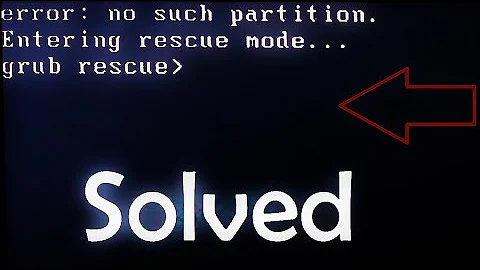GRUB error- no suitable video mode found
Solution 1
Solved this by copying
unicode.pf2file to/boot/grub/fonts.
Solution 2
In my case I was trying to boot using GRUB command line (without grub.cfg file), so I had to load the video module to get my TinyCore to boot:
insmod all_video
Without this, I was getting the same error as OP.
However, as Aniket Bhattacharyea answered, I also did have to manually copy unicode.pf2 file to /boot/grub/fonts to get terminal_output gfxterm to output valid characters.
Related videos on Youtube
Aniket Bhattacharyea
Updated on September 18, 2022Comments
-
 Aniket Bhattacharyea over 1 year
Aniket Bhattacharyea over 1 yearI recently made an LFS and made some changes in GRUB. I added the update-grub command. I'm able to set background color and highlight color. But when I add a custom theme-
update-grubgives-Generating grub configuration file ...
Found theme: /boot/grub/theme/dark_squares/theme.txt
Found linux image: /boot/vmlinuz
Found initrd image: /boot/initrd.img-no-kmods
doneLooks good. Doesn't it?
However, when I reboot, some error flashes by too fast, but it boots normally. However, I managed to ( don't ask how) read the errors-
error: file
/boot/grub/fonts/unicode.pf2not found.
error: no suitable video mode foundthis is my
/etc/default/grub-# If you change this file, run grub-mkconfig -o /boot/grub/grub.cfg # afterwards to update /boot/grub/grub.cfg. GRUB_DEFAULT="0" GRUB_SAVE_DEFAULT="true" #GRUB_HIDDEN_TIMEOUT=0 GRUB_HIDDEN_TIMEOUT_QUIET="false" GRUB_TIMEOUT="10" GRUB_DISTRIBUTOR=`lsb_release -i -s 2> /dev/null || echo Papiya` GRUB_CMDLINE_LINUX_DEFAULT="" GRUB_CMDLINE_LINUX="" GRUB_THEME=/boot/grub/theme/dark_squares/theme.txt # Uncomment to disable graphical terminal (grub-pc only) #GRUB_TERMINAL=console # Select the terminal output device. You may select multiple devices here, # separated by spaces. # Valid terminal output names depend on the platform, but may include ‘console’ # (PC BIOS and EFI consoles), ‘serial’ (serial terminal), ‘gfxterm’ (graphics-mode # output), ‘ofconsole’ (Open Firmware console), or ‘vga_text’ (VGA text output, # mainly useful with Coreboot). # The default is to use the platform's native terminal output. GRUB_TERMINAL_OUTPUT="gfxterm" # The resolution used on graphical terminal # note that you can use only modes which your graphic card supports via VBE # you can see them in real GRUB with the command `vbeinfo' GRUB_GFXMODE="1024x768x32" # If graphical video support is required, either because the ‘gfxterm’ graphical # terminal is in use or because ‘GRUB_GFXPAYLOAD_LINUX’ is set, then grub-mkconfig # will normally load all available GRUB video drivers and use the one most # appropriate for your hardware. If you need to override this for some reason, # then you can set this option. After grub-install has been run, the available # video drivers are listed in /boot/grub/video.lst. GRUB_VIDEO_BACKEND="vbe" # Uncomment to select a font to use #GRUB_FONT_PATH="/boot/grub/DejaVuSansMono.pf2" # Set a background image for use with the ‘gfxterm’ graphical terminal. The value # of this option must be a file readable by GRUB at boot time, and it must end # with .png, .tga, .jpg, or .jpeg. The image will be scaled if necessary to fit # the screen. #GRUB_BACKGROUND="/usr/share/grub_backgrounds/magnetar_1024x768.jpg" # Set to ‘text’ to force the Linux kernel to boot in normal text mode, ‘keep’ to # preserve the graphics mode set using ‘GRUB_GFXMODE’, ‘widthxheight’[‘xdepth’] to # set a particular graphics mode, or a sequence of these separated by commas or # semicolons to try several modes in sequence. See gfxpayload. # # Depending on your kernel, your distribution, your graphics card, and the phase of # the moon, note that using this option may cause GNU/Linux to suffer from various # display problems, particularly during the early part of the boot sequence. If you # have problems, set this option to ‘text’ and GRUB will tell Linux to boot in # normal text mode. GRUB_GFXPAYLOAD_LINUX="keep" # Uncomment if you don't want GRUB to pass "root=UUID=xxx" parameter to Linux #GRUB_DISABLE_LINUX_UUID=true # Uncomment to disable generation of recovery mode menu entrys #GRUB_DISABLE_LINUX_RECOVERY="true" # Uncomment to get a beep at grub start GRUB_INIT_TUNE="480 440 1"





